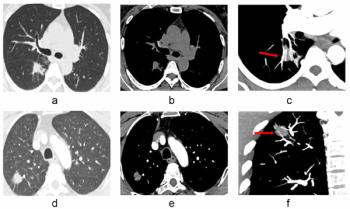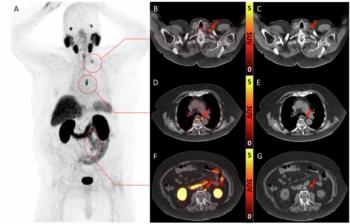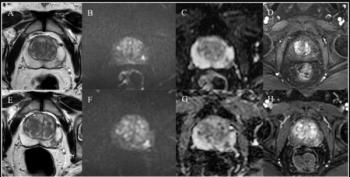
GE begins MRI sales campaign for open-style Profile scanner
Vendor held back launch to assure performanceGE Medical Systems is ready to begin commercial sales of SignaProfile, the Milwaukee company's 0.2-tesla permanent magnet openMRI scanner. GE officials made the announcement at last
Vendor held back launch to assure performance
GE Medical Systems is ready to begin commercial sales of SignaProfile, the Milwaukee company's 0.2-tesla permanent magnet openMRI scanner. GE officials made the announcement at last week'sInternational Society for Magnetic Resonance in Medicine conferencein New York City.
Sales of the long-awaited scanner have been on hold until GEofficials were sure their first venture in the low-field MRI sectormet the company's performance criteria, according to YoshiakiFujimori, general manager of GE's global MRI business. Consequently,no backlog has been accumulated for the product, despite its featuredposition at the last two Radiological Society of North Americashows.
The open-style Profile was first shown at the 1994 RSNA conference(SCAN 12/28/94). The Food and Drug Administration cleared thescanner's 510(k) application in August 1995.
Questions about the performance of Profile arose mainly becauseof the system's vertical-field magnet design, according to Fujimori.The vertical-field design creates opportunities to optimize performance,but also required GE engineers to design a new set of solenoid-styleradio-frequency coils, he said. The quality questions that delayedProfile's introduction involved the magnet, computer, and coils,according to Fujimori.
"The head coil was the biggest headache we had. We workedwith CR&D (GE's corporate laboratory in Schenectady, NY) andour R&D operations in Milwaukee to help develop the components,"Fujimori said.
GE has adopted a new policy that may mean Profile won't bethe last GE product to be slowed at the gate until quality performanceis assured.
"We now have a strict policy that unless we prove thequality, we will not actually get orders," Fujimori said."This is part of a new policy and culture here at GE."
Profile will be sold on the merits of compact siting, lightweight, and user-friendliness. The scanner will operate comfortablyin 23 square meters, according to James Mitchell, Profile productmanager for the Americas. The minimum ceiling height requiredby the system is 8 feet and it weighs less than 11 tons, Mitchellsaid.
Marketing of Profile will be directed to imaging center operatorswho want to cover the niche market of claustrophobic, obese, andpediatric patients, according to Mitchell. Established high-fieldservices will also be targeted. GE will not initially market Profileas an interventional system, Mitchell said.
"We will be looking for customers who want to enhancetheir offering with a more open, patient-friendly system to handlethe overflow and special cases from their high-field magnet,"Mitchell said.
Profile also capitalizes on many of the pulse sequences originallydesigned for GE's high-field Signa Horizon series, Mitchell said.
The standard Profile configuration consists of a head coil,two flexible body coils, and a general-purpose head, neck, andshoulder coil. An optional extremity coil is available. The systemoperates with the same workstation-based console used on GE's0.5-tesla Contour scanner.
Newsletter
Stay at the forefront of radiology with the Diagnostic Imaging newsletter, delivering the latest news, clinical insights, and imaging advancements for today’s radiologists.






























